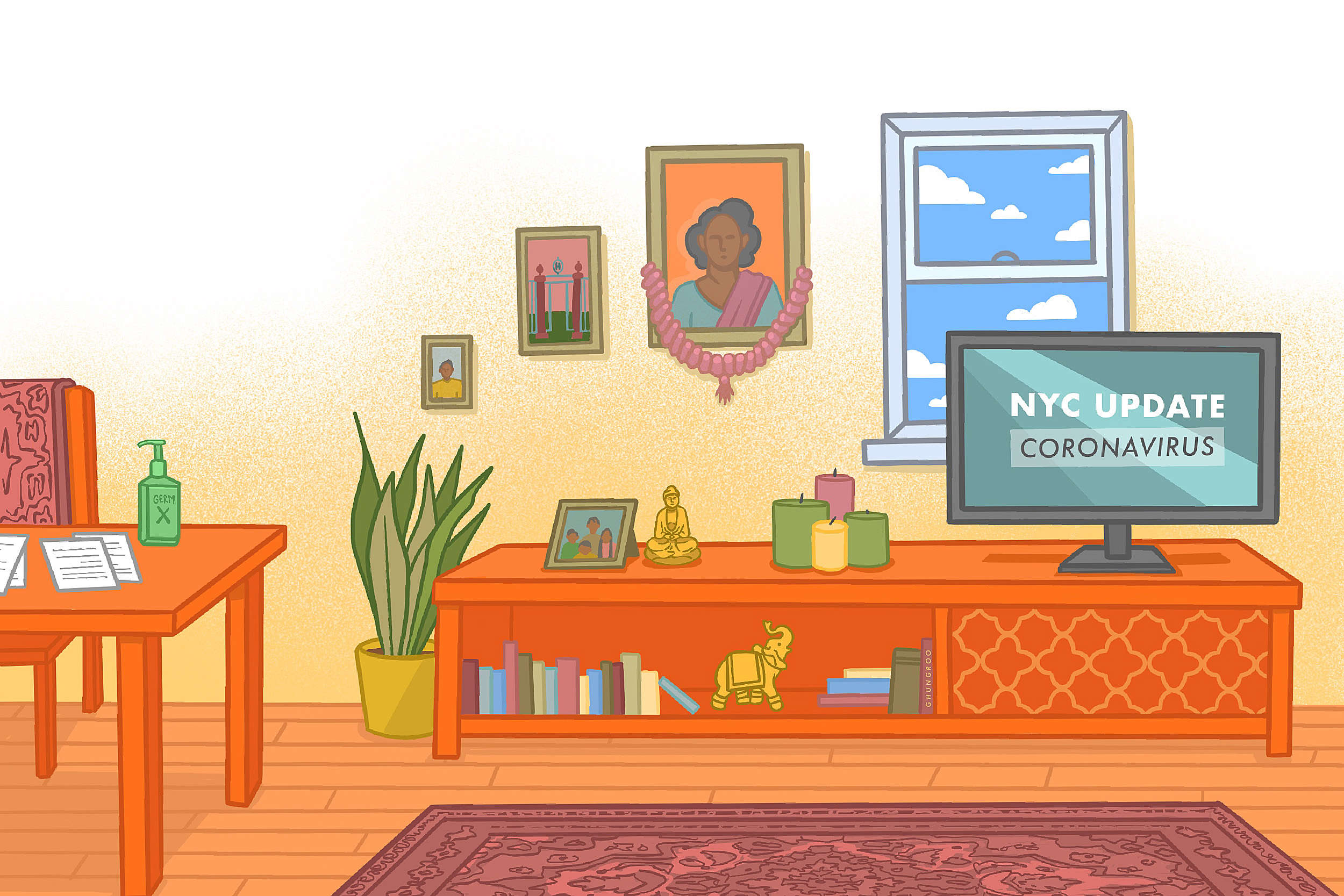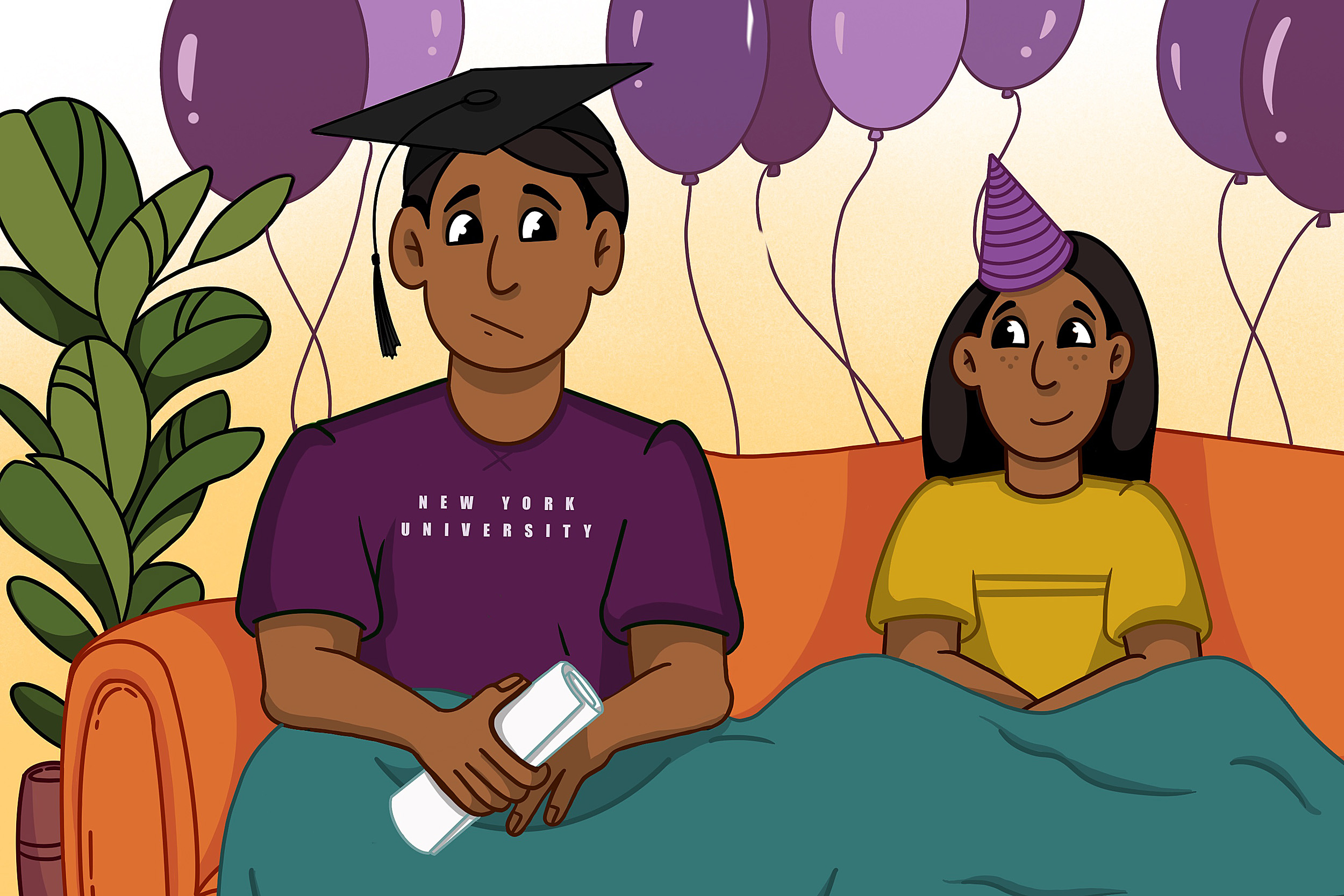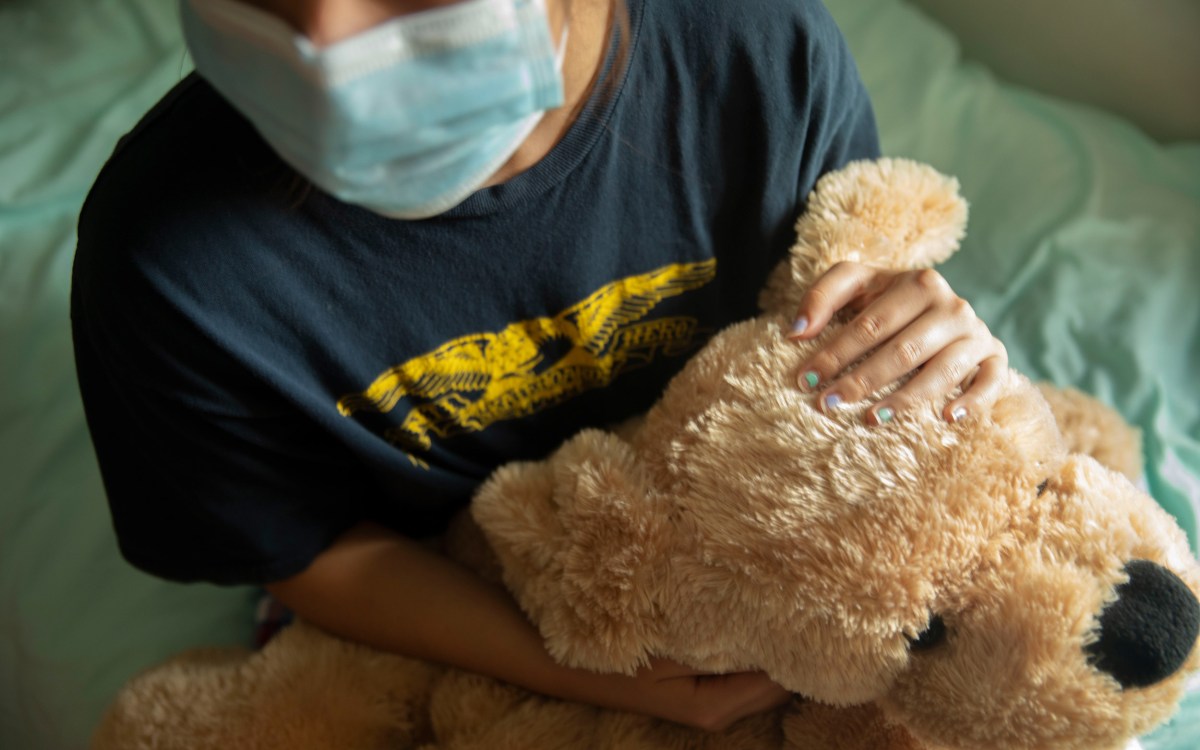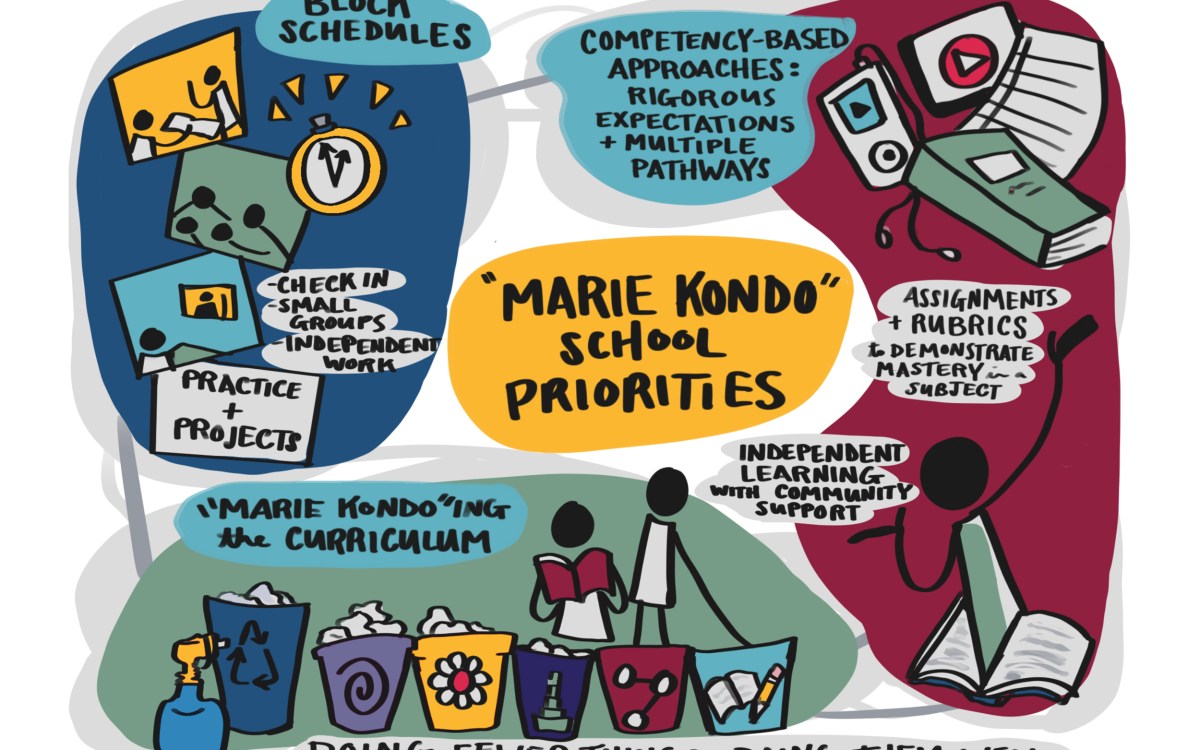
Illustrations by Amy Joseph
Easing children’s COVID-19 anxieties
Recent graduates create educational website to answer questions, offer assurances
Sahana Bail ’20 and Areeb Afridi ’20 both felt adrift after Harvard’s campus was evacuated in March due to the pandemic, leaving each to spend their final College semester at home. Bail, back with her family in Norwell, Mass., said she spent a lot of time watching reporters on TV both for information about COVID-19 and for the comfort of feeling less alone in her worries and fears. Afridi, a Dallas native who concentrated in human evolutionary biology, spent his spare time similarly engaged, only in his case reading medical articles about the disease.
One day in May, Bail and Afridi FaceTimed to talk about their lives in quarantine. Both felt that staying updated on COVID-19 helped assuage their fears. During the call, Afridi said he realized that young children probably lacked age-appropriate resources to be able to inform themselves and ease anxieties in the same way. All the same, children were still expected to transition to virtual school, practice social distancing, and face many other challenges.
Bail and Afridi, who became friends during their sophomore year through Ghungroo, a student-produced South Asian cultural show, started to look for online COVID-19 educational material for children to see what was available. They quickly discovered that their suspicions were correct. For all the information available to adults, there was little out there expressly for children. The pair decided to fill that gap by creating the interactive storytelling website Quarantine with Kavya.
“[Because of the news,] I felt less alone; I wasn’t the only one afraid of all the unknowns,” Bail said. “But we both realized that children can’t tune in at the push of a button to whatever news outlet they wanted to listen to that day.”
The website features read-aloud videos for children as young as 6 years old, with illustrations by artist Amy Joseph, a close childhood friend of Bail and recent graduate of the Massachusetts College of Art and Design. The story follows Kavya, a fictional South Asian girl from New York, through her life during the pandemic, and it chronicles her questions, frustrations, and worries.
There are currently three chapters available, each focusing on a different aspect of life in the time of coronavirus. The first explains the science: how the virus works, how it affects people’s bodies, how it spreads, and how to prevent infection. The second addresses the emotional toll on children, including fear, missing their friends, and boredom from staying inside all the time. The final chapter covers the economic impact through a story about Kavya’s brother worrying about what life will look like after he graduates from college.

“Knowledge is really important in helping people effectively deal with crises,” Afridi said. “You feel more comfortable because it’s less unknown and you know how to deal with it and how to act appropriately.”
Bail and Afridi began working on the project together by writing and editing the script, going back and forth over Zoom. Bail designed the website, and Afridi created the videos by matching the recorded script with the captions and corresponding scene illustrations.
An infectious disease specialist, education specialist, and child psychologist reviewed the script for scientific accuracy and efficacy. Bail and Afridi also sought input from Afridi’s 11-year-old cousin, Zara Irani, who voices Kavya. Irani expressed her own feelings and uncertainties about current events, which guided the process of writing the script. The other cast members included friends and family members. Ali, Kavya’s brother, is voiced by Afridi; Kavya’s father is voiced by Bail’s father; and Kavya’s mother is voiced by Afridi’s mother.
“We wanted kids to have fun listening to a video and going to a site that was made for them with the voice of a peer [and] someone they relate to,” Bail said.
The fact that the story features a South Asian girl and her family was important to both Bail and Afridi. They wanted to relate to South Asian children who don’t see their culture represented very often and to provide a platform to share their experiences on a larger scale.
Areeb Afridi and Sahana Bail at a College event.
Photo courtesy of Sahana Bail

The project was funded by a grant from the Lowell House Pechet Fellowship and is free and open to all.
Since its launch Sept. 8, the website has been viewed more than 1,000 times by users around the world. The next chapter is in the brainstorming stages and will be released in the coming months. The pair said they hope to add chapters as long as there is a need for child-friendly educational material on COVID-19.
Bail and Afridi are also looking into expanding the storytelling platform to teach children about different diseases, with South Asian representation as a focus.
“We believe that education is something that everyone is entitled to,” Afridi said. “[We want to] continue to bring knowledge to people who need it.”







